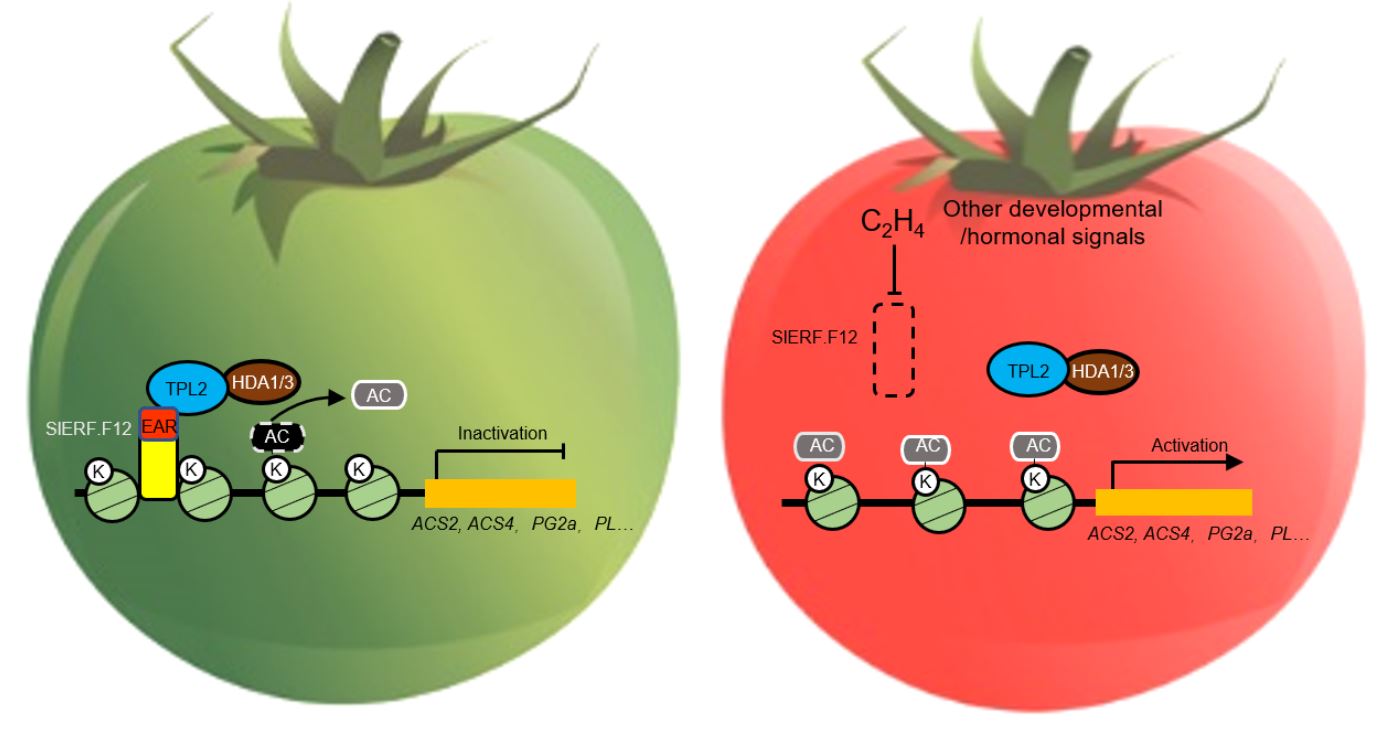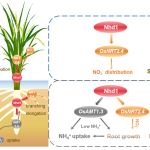SlERF.F12 modulates fruit ripening initiation
By Heng Deng, Yao Chen and Mingchun Liu, Key Laboratory of Bio-Resource and Eco-Environment of Ministry of Education, College of Life Sciences, Sichuan University, Chengdu, 610065, Sichuan, P.R. China
Background: The ripening of fleshy fruits is a complex, genetically programmed process. Tomato (Solanum lycopersicum) has been widely used as a model system for studying fleshy fruit ripening. Although ripening is orchestrated by a complex multi-phytohormonal control, the plant hormone ethylene has long been accepted as the main trigger of ripening in climacteric fruits, and its downstream transcriptional regulators Ethylene Response Factors (ERFs) are responsible for the ethylene signal. Among these ERFs, several members have an EAR (Ethylene-responsive element binding factor-associated Amphiphilic Repression) motif, the most common transcriptional repressor motif identified in plants to date. However, the functional significance of EAR motif-containing ERF proteins has yet to be determined in the context of fruit ripening and associated regulatory mechanisms.
Question: We identified the ERF gene, named SlERF.F12, which encodes a protein with an EAR motif and whose expression levels dramatically decrease at the transition to ripening, therefore being an ideal candidate to play an important role controlling this process. However, the role of SlERF.F12 in fruit ripening and its regulatory mechanism in fruit ripening remain unclear.
 Findings: We demonstrate that SlERF.F12 negatively regulates the onset of tomato fruit ripening by recruiting the co-repressor TPL2 (TOPLESS protein 2) and the histone deacetylases HDA1/HDA3 to repress the transcription of ripening-related genes. We show that SlERF.F12 interacts with the co-repressor TPL2 via its C-terminal EAR motif and recruits histone deacetylases to form a tripartite complex. This complex actively represses transcription of ripening genes by decreasing the level of acetylation at their promoter regions.
Findings: We demonstrate that SlERF.F12 negatively regulates the onset of tomato fruit ripening by recruiting the co-repressor TPL2 (TOPLESS protein 2) and the histone deacetylases HDA1/HDA3 to repress the transcription of ripening-related genes. We show that SlERF.F12 interacts with the co-repressor TPL2 via its C-terminal EAR motif and recruits histone deacetylases to form a tripartite complex. This complex actively represses transcription of ripening genes by decreasing the level of acetylation at their promoter regions.
Next steps: We would like to know whether this regulatory module is conversed across other fruit species such as kiwifruit, apple, pear, and banana. Based on our findings, we wish to develop strategies for the application of our results to control the ripening time and shelf life of fruits.
Reference:
Heng Deng, Yao Chen, Ziyu Liu, Zhaoqiao Liu, Peng Shu, Ruochen Wang, Yanwei Hao, Dan Su, Julien Pirrello, Yongsheng Liu, Zhengguo Li, Don Grierson, James J. Giovannoni, Mondher Bouzayen, Mingchun Liu (2022). SlERF.F12 modulates the transition to ripening in tomato fruit by recruiting the co-repressor Topless and histone deacetylases to repress key ripening genes. Plant Cell, https://doi.org/10.1093/plcell/koac025



